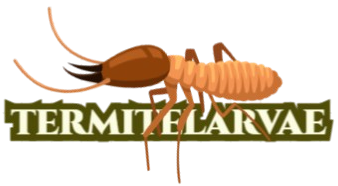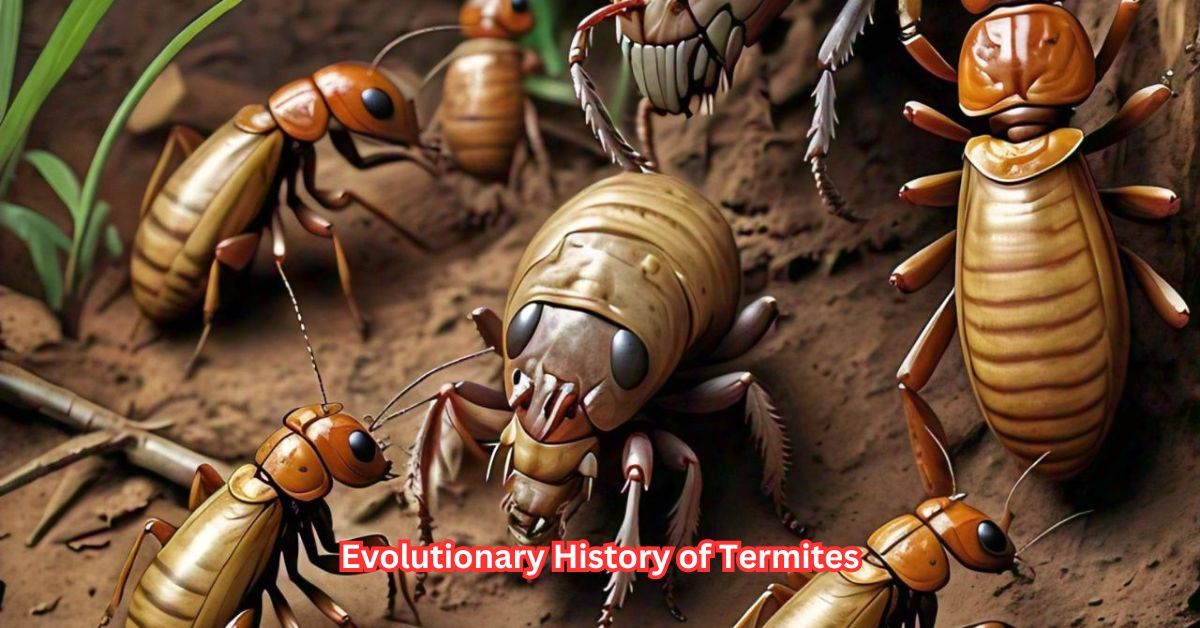Introduction
Termites have been tagged as silent destroyers because they can cause substantial damage to wooden structures most of the time, going undetected. These tiny insects actually perform an important task in the natural ecosystem. They destroy dead wood and turn it into manure, thereby enriching the soil. The reason for concern, however, lies in the fact that these termites have caused property damage requiring expensive repairs; hence, effective management strategies are called for. Knowing the various species of termites common in homes may enable a homeowner to recognize an infestation at an early stage and take proper remedial action.
Common Termite Species in Homes
So many species of termites exist in the world with their unique characteristics and behaviours. Termites cause high levels of damage in homes if not well-managed infestation. Commonly found termite species are subterranean termites, dry-wood termites, damp-wood termites, Formosan termites, conehead termites, desert termites, and lastly the arboreal termites. Each of these species has its challenges in detection, prevention, and control.
Subterranean Termites
These species belong to one of the most destructive kinds of termites. They have very large underground colonies, forming a network of tunnels in which foraging is done. Such species do very well in moist conditions and can be found in areas that have free water availability. They build mud tubes to gain access to above-ground wood for foraging. Also critical to foraging, these tubes prevent them from drying out by supplying them with the moisture they need to live. Termites can cause structural damage to a house because subterranean termites eat wood from the inside out, leaving only its thin veneer on the outside intact.
Drywood Termites
Dry wood termites do not need to have contact with soil moisture and can directly infest dry wood. They usually inhabit warm climates and attack furniture, framing, and flooring. Drywood termites form distinctive fecal pellets which often are the first sign of an infestation. Prevention and treatment of dry wood termite infestations involve the removal of infested wood and chemical or heat treatment to kill the pests.
Dampwood Termites
Dampwood termites are attracted by moist, decaying wood and, in most cases, infest structures with leaking roofs, plumbing leaks, and even ventilation issues. These are large-bodied termites that do a lot of damage if their activity is not checked in time. In most cases, damp wood termite control usually requires the elimination of moisture problems within the home and the replacement of the affected wood.
Formosan Termites
Formosan termites are an exotic, invasive species native to East Asia. They differ from all other species of termites in the aspects that they are very aggressive, with very large colonies. These termites are considered very destructive termite species since they consume large amounts of wood very fast. Formosan termites form complex mud nests; very often, they also infest aboveground structures very effectively. Effective management of the Formosan termites calls for professional treatment because of the general resilience and intricacies of their colony structure.
Conehead Termites
The conehead termites get their name from the cone-shaped head and are indigenous to the Caribbean but have found their way to the United States and other places through various means of transportation. Unlike most other species, they do not make underground tunnels. For this reason, they are able to cover a lot of space above ground quite rapidly. Conehead termites are very aggressive foragers; therefore, they are able to do much damage in very little time. Treatments against conehead termites focus on colony elimination by effecting sufficient inspection.
Desert Termites
Desert Termites are insect species that adapt to the arid environments in the deserts of the southwestern United States; they primarily feed on grass and other plant materials, even though they might get into wooden structures while searching for moisture. The Desert termites build unique, same mud tubes and cause damage to both homes and landscaping. Desert termite control normally consists of correcting moisture issues and creating chemical barriers around structures.
Arboreal Termites
The tree-dwelling termites, also known as arboreal termites, have their nests in trees and mostly occur in countries that are in the tropics. Majorly, they feed on dead wood, and sometimes they attack wooden buildings and furniture near the respective nests. While they are vital components in forest environments, they become serious nuisance organisms once they get to attack houses. Control measures in most cases target the removal of infested trees and treatment of structures around them.
Identifying Infestation by Termites
Early detection of termite infestations is important to reduce potential damages. Common signs that alert one to termite presence are mud tubes, discarded wings, wood damage, and frass. Regular inspections, in particular, within areas that are prone to moisture, will establish infestations before they become too severe.
Preventing Termite Infestations
Effective methods for preventing termite infestation include the reduction of moisture levels around and in the home, sealing the entry points, and using termite-resistant materials in building. Wood debris or firewood should not be kept near homes while attics and crawl spaces need to be kept well ventilated at all times.
Effective Methods of Control
Control methods are generally dependent upon the species and intensity of the infestation. Generally, most people apply chemical treatments, usually in liquid termiticides and baiting systems, to kill termites and for structure protection. In controlling termite populations, especially with non-chemical physical barriers, this may turn out to be very effective, such as with biological control.
Professional Options of Termite Treatment
In heavy infestations, professional termite treatment may be necessary. Professionals in pest control are able to conduct thorough inspections, apply appropriate treatments, and devise a program of continual monitoring that will ensure termites have been eliminated and won’t return. It is important to look for a qualified, ethical, and reputable pest control company with experience in managing termites.
Home Remedy Termite Control Techniques
Many homeowners may try to use DIY termite control by using borate treatments, orange oil, or nematodes in low level infestations. The thing is that do-it-yourself methods against termites are much less potent compared to professional treatments and very frequently cannot completely remove an infestation. Before resorting to DIY termite control, homeowners should have a basic understanding of the risks involved versus the rewards.
Environmental Impact of Termite Control
Another major factor that has to be taken into consideration is the environmental effect of the termite control methods. Eco-friendly measures in this regard have to be adopted to reduce the harm caused to the environment or the non-target species through biological control agents and minimizing the use of pesticides. In this regard, wherever possible, the homeowners should go for sustainable options for termite control.
Termite Behavior: A Quick Understanding
Successful management is dependent on the understanding of termite behavior. Termites are social insects; they live in colonies with several different castes: workers, soldiers, and reproductive individuals. The insects are cellulose feeders; that is, their food source is a compound found in wood and plant material. They use pheromones in communication. This complex social structure makes the termite colony resilient and difficult to eradicate.
Termite Damage and Repair
Termite damage can be very extensive, actually even to the point of compromising the structure integrity of the house. Repairs for termite damage generally consist of replacing termite-infested wood, reinforcing weakened structures, and correcting moisture problems. Early detection and treatment are important to keep down repair costs and prevent further damage.
The Role of Termites in Ecosystems
Although termites are a nuisance in homes, they actually play an important role in ecosystems by breaking down dead wood and recycling nutrients, which improves the structure of the soil. Termite management thus balances between protecting homes while preserving their environmental contributions.
Common Myths About Termites
There are many myths associated with termites, like ‘termites infest only old homes’ or ‘in-house DIY treatments are effective in all cases.’ Exposing these myths can help a house owner make an informed decision vis-à-vis the prevention and control of termites. Education and awareness are thus extremely important to manage termite risks effectively.
Preventing Termites during Construction
The principles of preventing termite infestation at construction stages are based on using termite-resistant materials, applying chemical barriers, and designing buildings that allow for easy moisture dissipation. Preventive measures against the entry of termites, if taken at the very beginning, may save future unwanted guests and costly repairs to the homeowners.
Innovations in the Detection of Termites
Improvements in termite detection equipment, such as infrared cameras and acoustic sensors, allow the activity of termites to be detected early and accurately. Such new inventions enhance the inspection procedures and offer some management approaches successful in managing termites.
Global Distribution of Termites
The species distribution for termites will, therefore, be regional, dictated by climatic and environmental conditions that include physical-chemical factors. This global distribution knowledge enables forecast of the risk of infestation and consequently, implementation of suitable control measures. Termite species in the tropics are quite different from those in temperate climates.
Historical Impact of Termites
Actually, termites have infested human structures dating back thousands of years, with documented termite damage in ancient buildings or at historic locales. Studies of the historic impact of termites provide information related to behavior and tenacity that help drive modern management practices.
Future Trends in Termite Management
In this respect, future trends in management will increasingly be directed toward more sustainable and more effective methods of control, with a greater transfusion of technology transfer in the domains of detection and monitoring, and an enhanced emphasis on IPM approaches. Innumerable research studies on the biology and behavior of termites have been continuously conducted to enable an enhancement of strategies aimed at managing such persistent pests.
Conclusion
Knowing the seven common species of termites infecting homes worldwide is critical to its management and prevention. While each species significantly poses a different challenge, armed with the proper knowledge and proactive measures, a homeowner can safeguard his property against these very destructive pests. Regular inspections, preventive measures, and professional treatments will maintain a termite-free home.
Frequently Asked Questions
How does one identify a termite infestation?
The most common signs of termite activity are mud tubes, discarded wings and damaged wood, with termite frass (excrement).
How do I prevent termites in my home?
Help prevent termites by controlling moisture, eliminating entry points, using termite-resistant materials, and providing good ventilation into the structure.
Which species is the most destructive termite?
The Formosan termite is among the most damaging due to their high degree of aggressiveness and large colony size.
Can I treat a termite infestation myself?
Yes, there can be DIY methods for termite control, but they are not that effective compared to professional treatments. Infestation intensity is the major determinant to consider when talking about DIY methods.
Are there eco-friendly ways of termite control?
Yes, through the application of biocontrol agents and reduction of pesticide applications to reduce environmental impacts.
When should you call in a professional?
In the instance of heavy infestation, a lot of damage, or failure of DIY methods, call a professional for termite control.

